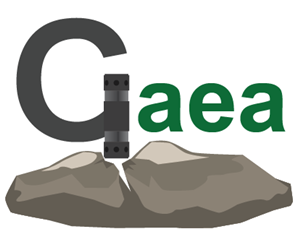Optimizing crushing: preventing the formation of large boulders during blasting in quarries
When blasting in quarries, safety is a fundamental criterion in blasting design. However, due to the inherent uncertainties of the rock mass, the quality of the drilling phase and the irregularities of the free face of the steps, it is impossible to guarantee the quality of the blasting without a good assessment and monitoring of the quality of the blasting steps. This is especially true for step blasting with a height of more than 10m.
With this in mind, it is necessary to conduct quantitative and qualitative studies on the use of methods and corresponding equipment to optimize the entire process, not only in terms of safety, but also in terms of overall economy, with the goal of obtaining the desired crushing particle size while minimizing the formation of large boulders, noise and vibration impacts and adjacent steps.

During the drilling phase, it is very likely that the blast-hole will not follow its planned straight angle trajectory, resulting in deviations that are very common. These increase with the depth of the borehole and are caused by many factors. The deviations do not seem to exist on the surface of the step, making it difficult to measure the actual distance between the borehole and the free face.
All these can affect the correct distribution of explosives in the intended blasting area and can result in fly-rock, noise, seismic waves, the formation of boulders with a size larger than the crusher can act on, which reduces safety and increases mining costs.
Below is presented a case study carried out in a quarry in northern Portugal. Optimization techniques to reduce the formation of boulders and fly-rock were applied, such as inclinometers (for borehole deviation control), 3D modeling (using O-Pitblast software), bench mapping (using drones) to study the distribution of free positions relative to the resistance line for the first row.
Preliminary assessment
In the preliminary stage, a visual inspection of the quarry was carried out and what really stood out was the amount of boulders. Boulders are a problem and can be related to several factors:
Inadequate blast design parameters;
Inefficient drilling control;
Geological conditions, etc...

The ideal situation is to obtain a sufficient crushing size throughout the rock mass blast, eliminating the need to carry out secondary blasts and avoiding additional budget in the blasting phase. The optimization of blasting can reduce not only the costs associated with the blasting operation, but also the remaining costs associated with the drilling, loading, transportation and crushing phases. The formation of boulders is not ideal, as it requires secondary blasting, the operational costs associated with this activity, and can lead to an increase in the risk of flyrock.
In this case, alternative methods that offer greater safety can be used, such as hydraulic hammers, "drop balls", expansive cement, wedges, etc. All of these are associated with the blasting process, so efficient blasting can be achieved by using methods that minimize or even eliminate operational costs.
The "factor" of fly-rock must be taken into account, as it can cause serious damage not only to personnel, but also to people in the neighboring communities, the company's facilities, and nearby structures. The resulting consequences are production interruptions, corresponding fines or even a complete cessation of exploration.
The above aspects can be better analyzed and improvements can be made in terms of economy, safety and productivity by optimizing blasting plan variables and using technologies that facilitate blasting plan design. These take into account the geological conditions present in the analyzed quarry.
In blast-hole inspection work in quarries, drilling deviations in the rock mass stand out, as the holes rarely follow the predetermined trajectory, which in turn causes them to deviate from the original blast design. The situation becomes worse with increasing drilling depth. (Flying Rock Accident Animation Video) In terms of crushing requirements, the results must be compatible with the loading and hauling equipment and the size of the primary crusher to avoid secondary explosions (LIMA, 2001).




